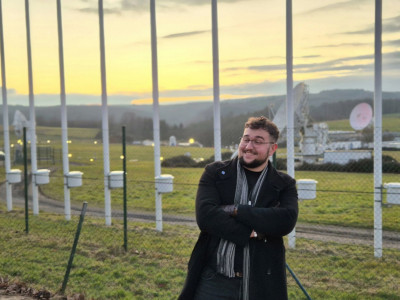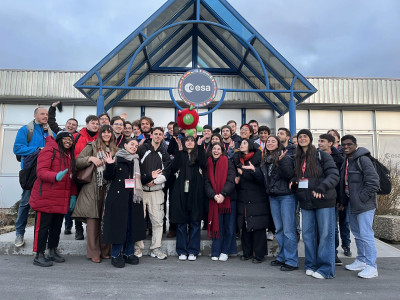News
Aerospace Engineering undergraduate completes competitive European Space Agency programme
24 February 2025


Andreas Poimenidis, a first-year Aerospace Engineering student, has achieved an extraordinary milestone by being selected as one of just 30 students worldwide to attend a prestigious five-day seminar at the European Space Agency (ESA) in Belgium.
“This course is mainly aimed at final years, postgraduates and PhD students, and as a first year I didn't have much hope. Until I got an email starting with the word 'congratulations'. I was happy to be accepted and looked forward to meeting people from all around the world" said Andreas.
The Ladybird Spacecraft Communications Training Course gave the 30 students an insight into spacecraft telecommunications. Through lectures, discussions and real-world problem solving, the seminar demonstrated that there would be no space missions without highly skilled communications engineers.
The group was taught by an ESA Mission Operations Engineer and had the opportunity to visit the Redu station, which houses a radio antenna used for spacecraft communications. There, they worked with the global navigation satellite system Galileo and contributed to real-life Proba missions.
“Our task was to create a presentation for a mission of a satellite that would have to go and fully map Ceres, fly by Pluto and deal with all the challenges in telecommunications this would bring… My team was the only team out of three that managed to completely save the mission and complete 100% of the tasks at hand. We won, and it was an absolute pleasure working with some really smart people from around the world.”
Though only in his first year at Queen Mary, Andreas is already involved in various engineering initiatives. He is an active member of Formula Student, where he contributes to designing and building a Formula One-style car. He is also engaged with the Electronic Engineering and Computer Science Society and serves as an Attitude and Orbit Control Subsystems Engineer for Queen Mary Students for the Exploration and Development of Space.
Reflecting on his experience, Andreas said: “It was one of the most unique and amazing experiences to be a part of the Ladybird Spacecraft Communications Programme, and get an image of just how complicated a telecommunications centre is. Hopefully this isn't the last time I get to be a part of ESA!”
| Contact: | Ayden Wilkes |




